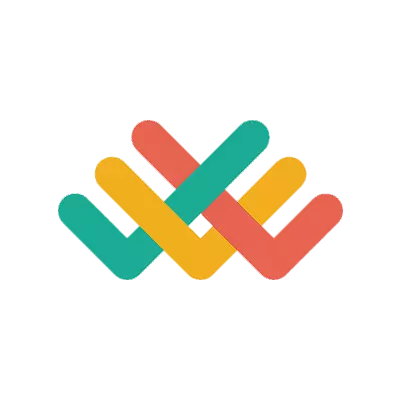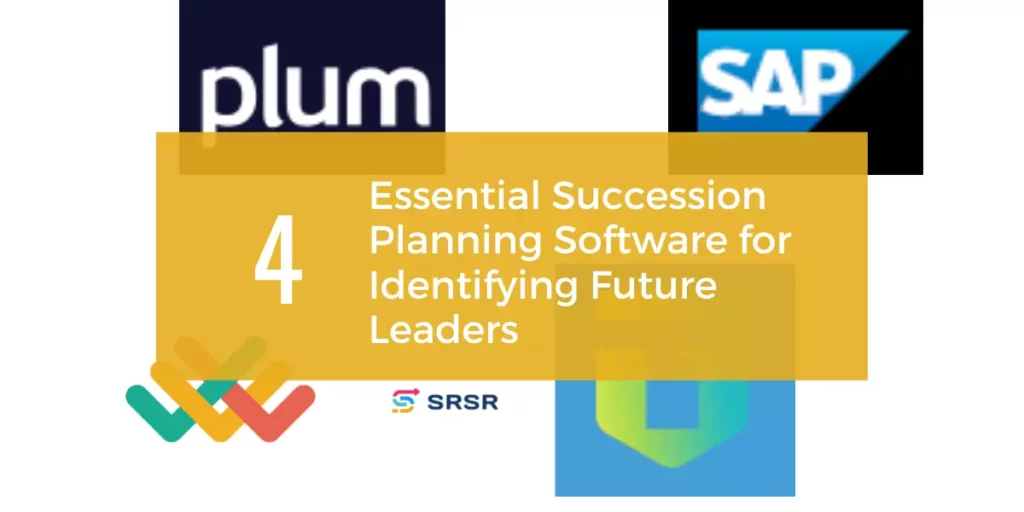One of the most valuable resources your company has is its human capital. Succession planning is one of the best ways to ensure you retain your human capital’s knowledge, skills, and leadership capabilities, and ensure your company has the talent and skills needed to fill every role.
Why is succession planning important?
Succession planning ensures that your company is poised to meet the future, but it doesn’t just involve selecting a future CEO or other high-ranking leaders. Instead, it involves ensuring your company is training future leaders on all levels, including managers and team leaders.
Succession planning is important for several reasons.
Time-saving
Your company can avoid scrambling at the last minute when leaders move to other companies or approach retirement age. Instead of experiencing a skill gap while waiting for employees to gain proficiency, your employees will be well-equipped to slip into their new roles as seamlessly as possible and keep your company running smoothly.
Skill development
By planning in advance, you can also develop leaders with the skills your organization needs. While hiring from outside your company may be necessary, succession planning reduces this need by making sure your current staff has the skills they need to successfully take on new roles within the company. It identifies skills and competencies that future leaders already possess, while also providing the tools so they can continue growing in other areas as well.

Cost savings
Bringing up new leadership from within your company is also significantly less expensive than hiring new employees. By hiring from within, you avoid costs like advertising openings, interviewing, and onboarding new employees. Your existing employees are already familiar with your company culture, and hiring from within also reduces employee turnover and increases loyalty.
Resource retention
The aging workforce means that many companies’ most knowledgeable leaders are looking toward retirement. According to AARP, 15% of the U.S. workforce is age 60 or higher. If this is true of your company, succession planning is even more important. The wisdom and knowledge long-term employees possess can be more easily passed to the next leaders of your company when you use succession planning to anticipate and plan the handoff. And if you commit to developing your employees’ knowledge, skills, and talent, they’ll be more likely to stay on board.
Succession planning prepares employees for a variety of roles within your company, not just the top tiers of leadership. The larger your organization is, the more difficult it can be to take the thoughtful, planned actions succession planning requires. However, five tools are at your disposal that will help assist you in succession planning within your organization.
Succession planning software
One of the best ways to plan and organize succession planning within your organization is by using succession planning software. This type of software can be used to track employees’ skill sets. It can also help with goal setting, reviews, and managing all aspects of succession planning and identifying potential leaders within your company.
Sometimes, departments in companies, especially large companies, can become siloed. There may be an individual working in one area with a great skill set and potential in another area, but organizational silos can prevent individuals from ever reaching their full potential.
Succession planning software mitigates this by keeping employee competencies, feedback records, education, and certifications more organized within a single ecosystem. It can be used not just for identifying potential leaders, but for cross-departmental moves so employees can continue growing and maximizing their potential.
Feedback assessments
Most of us are familiar with a top-down style of workplace assessment, where managers and leaders provide performance reviews for the staff members under them in the organization. However, sometimes leadership doesn’t have a complete view of each individual’s strengths. Full circle feedback also called 360-degree feedback, gives an opportunity for a more well-rounded view of each employee.
With 360-degree assessments, managers aren’t the only ones providing feedback. Coworkers, peers, and sometimes even internal or external customers provide confidential and anonymous feedback to provide a complete picture of how the employee is performing.
Sometimes peers and coworkers have a more accurate view of performance than supervisors do. This 360-degree feedback also provides accountability and can help identify both strengths and weaknesses while also helping identify future leaders.
While 360-degree feedback assessments can’t be a standalone assessment for future leaders or even identify every strength of an individual, they are a necessary tool in an arsenal of tools for employee succession planning.
Leadership competency models
Leadership competency models allow each business to define the leadership qualities it needs. They’re customized for each business, so each leadership competency model may look a little different.
Once your company’s ideal leadership qualities are defined, you can pinpoint what competencies each employee has. Use this information to help find and develop future leaders, targeting development goals in line with the goals of the company as a whole while finding and retaining talent from within your company.
High-potential development programs
These programs focus on employees with high leadership potential. They incorporate mentorship by other leaders within your organization to create a talent pipeline by developing strengths and managing weaknesses to create ideal leaders.
High-potential development programs include an employee development plan tailored o the employee. While not every employee is involved in a program such as this, it can help fast-track potential leaders from within your organization and is an essential tool for succession planning.

Job rotation programs
Job rotation programs give employees the chance to develop skills in areas outside of where they typically work. There are several benefits to job rotation programs, including cross-training and providing employees with additional perspectives of employees in other departments.
They also assist in succession planning. It gives employees an opportunity to “try on” other areas of the company and see where they may want to upskill or reskill to move effectively into other roles within the company. Job rotation programs allow employees to organically develop new skills, and give potential leaders the opportunity to become well-versed in multiple areas of the company before they move on to leadership roles.
How to choose the right succession planning software
All of these aspects of succession planning can be organized using succession planning software. But with dozens of choices in the market, how do you know what to look for to choose the best one for your company?
When choosing the best succession planning software for you, look at several key factors.
Your goals: Why do you need this software? Does this software perform all the functions and have all of the features that will provide the most benefits to your organization? On the other hand, if you only need a few key features, you can save money by choosing a less-robust software that still meets all your needs.
Scalability: Does it fit your organization now? What about in five years? If you’re planning to expand your business, will this software grow with you and still support the number of employees you plan to have in the future?
Integration: Does it integrate with other software you use, such as your HR and recruiting software? Choosing software that integrates with your existing platforms can save you time and avoid duplicating work.
Software features: Does your succession planning software offer analytics and reporting? Robust reporting can demonstrate the effectiveness of your succession planning and provide insights to help you make data-driven decisions in succession planning.
Best succession planning software
Here are our favorite types of succession planning software, and some details about each one. Many of these offer a free trial, so you can try them out without making a financial commitment until you’re ready.
1. Plum

Plum succession planning software focuses on helping find your employee’s talents and skills, identifying skill gaps, and assisting employers in finding the best role for each employee. It’s based on fifty years of organizational psychology and uses personality, skills, and other assessments to fit employees into the best role for them.
Price
Available on request
| Pros | Cons |
|---|---|
| Matches every employee to the best job for them | Some users felt that while the insights offered were helpful, they didn’t have guidance on how to move forward with the insights and create change in their organization |
| Resource library for employees | |
| Identifies potential leaders from within your organization |
2. SAP

SAP Workforce Planning & People Analytics provides businesses with a single source of truth about the human capital of their organization. The deep analytics provided give access to information like what percent of the workforce is expected to retire in the next years, trends, and even analyzing workforce succession plans. Companies can use this information to plan for the future and remain agile. SAP also offers several other products and services for companies of all sizes.
Price
SAP SuccessFactors Workforce Analytics pricing begins at $2.79 per user per month
| Pros | Cons |
|---|---|
| Many ways to visualize data | May be more expensive than other tools |
| Robust reporting and analytics | May be difficult to pull actionable insights out of the data provided |
| Learning tools to support learning how to use and access the data |
3. TalentGuard

TalentGuard is an all-in-one talent management platform. Each employee’s talent profile tracks detailed information about employees’ skills, experiences, qualifications, goals, 360-degree peer feedback, and more. Employers can leverage this data to view their workforce talent and make succession planning decisions with confidence.
Price
Available on request
| Pros | Cons |
|---|---|
| Tools help eliminate subjectivity and provide career path guidance for both employees and employers | Some users experience slow loading times for reports |
| Intuitive features make it easy to use | No mobile app exists currently |
| It’s easy to set up and begin using |
4. Lattice

Lattice is a solution available for both small businesses and enterprise-level companies. While it may not have as many bells and whistles as some of the other products listed, it gives smaller employers the chance to have the same functionality. Its pre-built system incorporates performance reviews, employee engagement, and talent development and provides analytics so that HR and other leaders can make strategic goals and execute the vision to support company growth.
Price
Pricing varies based on product, starting from $11/person per month
| Pros | Cons |
|---|---|
| Includes performance review records and talent development plans | Some users say the interface is difficult to navigate |
| Integrates with other software like Salesforce, Slack, Microsoft Teams, and dozens more |
Final thoughts on succession planning software
Every business should use some form of succession planning to ensure their organization is ready for change. Even if you don’t have people on your team who are near retirement age, it’s wise to make sure your employees are well-versed in different roles within your company and to support their growth throughout their careers. Your own company is often the best place to look for future leadership and succession planning will help you cultivate a team ready to take on the challenges of a new position.
Whether you decide to do succession planning using software or stick to more traditional pen-and-paper planning, your company can benefit from some level of succession planning. Businesses of any size can benefit from added accountability, 360-degree feedback, and job rotation programs to make sure your employees continue growing.
Check out our Complete Guide to Succession Planning for a step-by-step guide to creating the best succession plan for your business.

